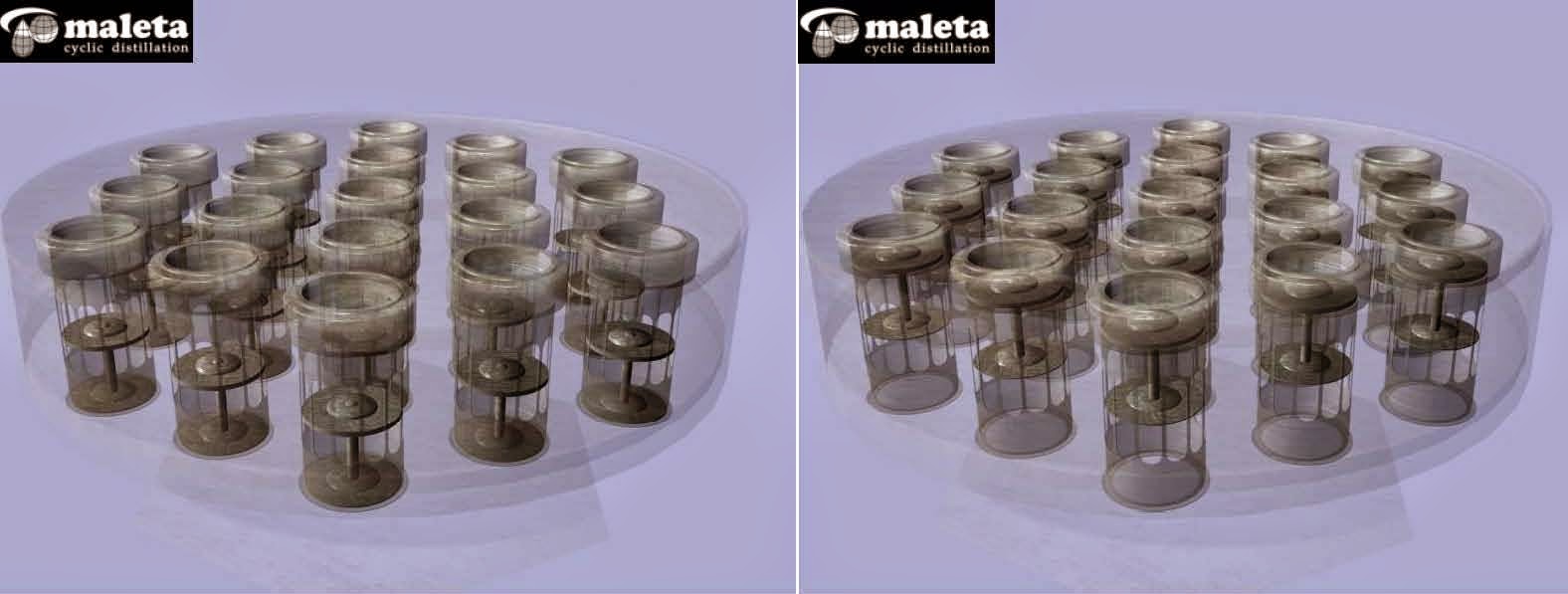At the ethanol plant that production
ethanol food grade, with capacity 30 000 liters per day was problem with
methanol content in final product (high methanol levels). Maleta cyclic
distillation LLC proposes to install addition high efficiency column in cyclic
mode for concentration methanol less than 5 ppm in the final product.
Column feed is unpasteurized
ethanol from rectification column (ethanol distillation column) in the amount
7…10 % of plant capacity. Steam consumption of cyclic methanol column is about
0.5 kg / L of input ethanol. The bottom liquid from methanol distillation column
goes as additional feed to rectification column (ethanol distillation column),
and the concentrate in the amount of 0.2…0.3 % remove like waste.
The additional cyclic
methanol column has next characteristic: column diameter 400mm, number of
Maleta distillation trays 15psc. The stripping section of distillation column
consists of 9 distillation trays - the concentration section of 6 distillation
trays.
The final results of
reconstruction are: the concentration methanol is less than 5 ppm in the final product; reduces of content of aldehydes
in ethanol food grade; increases the oxidation of ethanol food grade; improves
the organoleptic characteristics of ethanol food grade.


